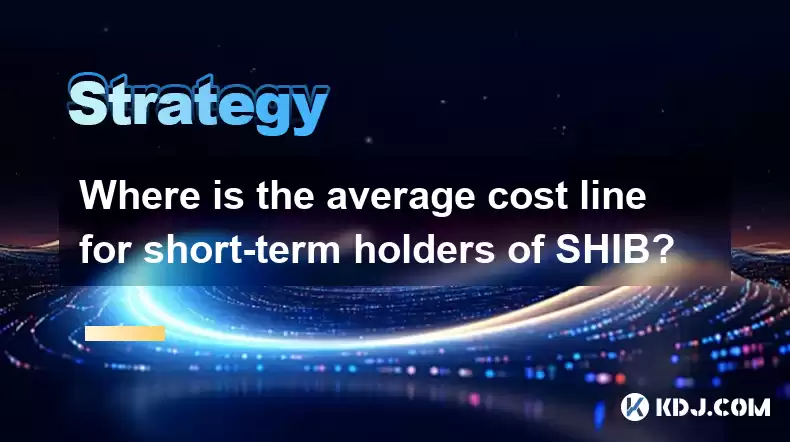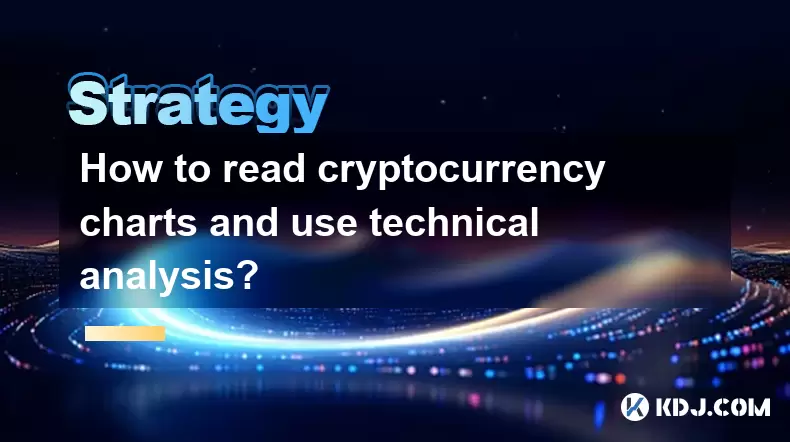-
 Bitcoin
Bitcoin $117500
2.15% -
 Ethereum
Ethereum $3911
6.19% -
 XRP
XRP $3.316
10.79% -
 Tether USDt
Tether USDt $1.000
0.01% -
 BNB
BNB $787.2
2.24% -
 Solana
Solana $175.2
4.15% -
 USDC
USDC $0.9999
0.00% -
 Dogecoin
Dogecoin $0.2225
8.40% -
 TRON
TRON $0.3383
0.28% -
 Cardano
Cardano $0.7868
6.02% -
 Stellar
Stellar $0.4382
9.34% -
 Hyperliquid
Hyperliquid $40.92
7.56% -
 Sui
Sui $3.764
7.63% -
 Chainlink
Chainlink $18.48
10.66% -
 Bitcoin Cash
Bitcoin Cash $582.1
1.88% -
 Hedera
Hedera $0.2601
6.30% -
 Avalanche
Avalanche $23.33
4.94% -
 Ethena USDe
Ethena USDe $1.001
0.02% -
 Litecoin
Litecoin $122.3
2.04% -
 UNUS SED LEO
UNUS SED LEO $8.969
-0.27% -
 Toncoin
Toncoin $3.339
0.86% -
 Shiba Inu
Shiba Inu $0.00001287
4.30% -
 Uniswap
Uniswap $10.43
7.38% -
 Polkadot
Polkadot $3.861
5.08% -
 Dai
Dai $1.000
0.02% -
 Bitget Token
Bitget Token $4.513
3.41% -
 Monero
Monero $267.7
-6.18% -
 Cronos
Cronos $0.1499
4.14% -
 Pepe
Pepe $0.00001110
5.15% -
 Aave
Aave $284.9
8.28%
Where is the average cost line for short-term holders of SHIB?
The average cost line for SHIB short-term holders, typically those holding less than 30 days, is key for gauging market sentiment and potential price movements.
Apr 19, 2025 at 03:42 am

The average cost line for short-term holders of SHIB, or Shiba Inu cryptocurrency, is a critical indicator that provides insights into the behavior and sentiment of investors who have held the token for a shorter duration. This line represents the average price at which these short-term holders acquired their SHIB tokens. Understanding where this line stands can help investors gauge potential support levels, predict market movements, and make informed trading decisions.
What Defines Short-Term Holders of SHIB?
Short-term holders of SHIB are typically defined as investors who have held their tokens for less than a certain period, often considered to be less than 30 days. These investors are usually more responsive to market fluctuations and news, and their trading behavior can significantly impact the token's price volatility. The average cost line for these holders is calculated by taking the total value of SHIB they own and dividing it by the total number of SHIB tokens they hold.
How to Calculate the Average Cost Line for SHIB Short-Term Holders
To calculate the average cost line for short-term holders of SHIB, you need access to data on their transactions. This data is often provided by blockchain analytics platforms. Here’s how you can do it:
- Gather Transaction Data: Obtain data on all transactions made by short-term holders of SHIB. This includes the price at which they bought the tokens and the quantity of tokens purchased.
- Calculate Total Investment: Sum up the total amount of money spent by these holders to acquire SHIB.
- Calculate Total Tokens: Sum up the total number of SHIB tokens acquired by these holders.
- Divide to Find Average Cost: Divide the total investment by the total number of tokens to find the average cost per token.
For example, if short-term holders spent a total of $1,000,000 to acquire 100,000,000 SHIB tokens, the average cost line would be $0.01 per SHIB.
Importance of the Average Cost Line for SHIB Short-Term Holders
The average cost line for short-term holders of SHIB is crucial for several reasons. Firstly, it acts as a psychological support level. If the price of SHIB falls below this line, short-term holders might start selling their tokens to cut losses, which could lead to increased selling pressure and further price declines. Secondly, it can serve as a resistance level. If the price of SHIB rises above this line, it might encourage short-term holders to sell their tokens to realize profits, potentially capping the price increase.
How to Use the Average Cost Line in Trading SHIB
Traders can use the average cost line for short-term holders of SHIB to make more informed trading decisions. Here are some strategies:
- Buying Opportunities: If the price of SHIB approaches or falls below the average cost line, it might be a good time to buy, as short-term holders might start buying back into the market to average down their costs.
- Selling Opportunities: If the price of SHIB rises above the average cost line, it might be a good time to sell, as short-term holders might start selling to lock in profits.
- Monitoring Market Sentiment: By keeping an eye on the average cost line, traders can gauge the overall sentiment of short-term holders and adjust their strategies accordingly.
Tools and Resources for Tracking the Average Cost Line
Several tools and resources are available for tracking the average cost line for short-term holders of SHIB. Some of the most popular include:
- Blockchain Analytics Platforms: Platforms like Glassnode and CryptoQuant provide detailed data on the transactions and holdings of SHIB investors, including short-term holders.
- Trading Platforms: Some trading platforms offer built-in tools for tracking the average cost line of various cryptocurrencies, including SHIB.
- Community Resources: Online forums and communities dedicated to SHIB often share insights and data on the average cost line for short-term holders.
Real-World Example of the Average Cost Line for SHIB Short-Term Holders
To illustrate the concept, let's consider a hypothetical scenario. Suppose the average cost line for short-term holders of SHIB is currently at $0.00001. If the price of SHIB drops to $0.000009, short-term holders might start selling their tokens to cut losses, leading to increased selling pressure. Conversely, if the price of SHIB rises to $0.000011, short-term holders might start selling to lock in profits, potentially capping the price increase.
Factors Influencing the Average Cost Line for SHIB Short-Term Holders
Several factors can influence the average cost line for short-term holders of SHIB. Market sentiment plays a significant role, as positive news and developments can drive the price up, while negative news can drive it down. Trading volume is another important factor, as higher volumes can lead to more significant price movements. Overall market trends in the cryptocurrency space can also impact the average cost line, as SHIB often moves in tandem with other major cryptocurrencies like Bitcoin and Ethereum.
Frequently Asked Questions
Q: How often does the average cost line for short-term holders of SHIB change?
A: The average cost line for short-term holders of SHIB can change frequently, as it is influenced by ongoing transactions and market movements. It is typically updated in real-time or on a daily basis by blockchain analytics platforms.
Q: Can the average cost line for short-term holders of SHIB be used to predict long-term price movements?
A: While the average cost line for short-term holders can provide insights into short-term market movements, it is not a reliable indicator for long-term price predictions. Long-term price movements are influenced by a wide range of factors, including broader market trends, regulatory developments, and technological advancements.
Q: Are there any risks associated with using the average cost line for trading SHIB?
A: Yes, there are risks associated with using the average cost line for trading SHIB. The line is based on historical data and may not accurately reflect future market conditions. Additionally, short-term holders' behavior can be unpredictable, and relying solely on this indicator can lead to losses if the market moves against your position.
Q: How can I access data on the average cost line for short-term holders of SHIB?
A: You can access data on the average cost line for short-term holders of SHIB through blockchain analytics platforms like Glassnode and CryptoQuant. Some trading platforms also offer this data, and you can find insights and discussions in online forums and communities dedicated to SHIB.
Disclaimer:info@kdj.com
The information provided is not trading advice. kdj.com does not assume any responsibility for any investments made based on the information provided in this article. Cryptocurrencies are highly volatile and it is highly recommended that you invest with caution after thorough research!
If you believe that the content used on this website infringes your copyright, please contact us immediately (info@kdj.com) and we will delete it promptly.
- Tron's Sell-Off Spurs Altcoin Shift: What's Next for TRX?
- 2025-08-08 08:30:12
- RUVI Presale: Is the Growth Potential Real?
- 2025-08-08 09:10:12
- Sleep Token's US Takeover: Thornhill Rides the 'Even In Arcadia' Wave
- 2025-08-08 08:30:12
- FTT Token's Wild Ride: Creditor Repayments vs. Market Drop - A New Yorker's Take
- 2025-08-08 07:10:12
- Floki Crypto Price Prediction: Riding the Robinhood Rocket or Just a Meme?
- 2025-08-08 07:15:12
- EigenLayer, Restaking, and Ethereum: Navigating the Hype and the Hazards
- 2025-08-08 06:30:12
Related knowledge

How to read cryptocurrency charts and use technical analysis?
Aug 08,2025 at 11:08am
Understanding the Basics of Cryptocurrency ChartsCryptocurrency charts are graphical representations of price movements over time. These charts are es...

How to avoid common crypto investment mistakes?
Jul 13,2025 at 01:35am
Understanding the Risks of Crypto InvestmentInvesting in cryptocurrency can be highly rewarding, but it also comes with significant risks. One of the ...

What is a long-short crypto strategy?
Jul 15,2025 at 10:56am
Understanding the Basics of a Long-Short Crypto StrategyA long-short crypto strategy is an investment approach where traders simultaneously take long ...

What is a long-short crypto strategy?
Jul 11,2025 at 01:28pm
Understanding the Basics of Long-Short Crypto StrategyA long-short crypto strategy is an investment approach where traders take both long and short po...

How to use the RSI indicator for crypto?
Jul 12,2025 at 03:56pm
Understanding the RSI Indicator in Cryptocurrency TradingThe Relative Strength Index (RSI) is a momentum oscillator used to measure the speed and chan...

Is copy trading a good strategy for crypto beginners?
Jul 12,2025 at 08:28am
Understanding Copy Trading in the Cryptocurrency MarketCopy trading is a strategy where novice traders replicate the trades of experienced investors a...

How to read cryptocurrency charts and use technical analysis?
Aug 08,2025 at 11:08am
Understanding the Basics of Cryptocurrency ChartsCryptocurrency charts are graphical representations of price movements over time. These charts are es...

How to avoid common crypto investment mistakes?
Jul 13,2025 at 01:35am
Understanding the Risks of Crypto InvestmentInvesting in cryptocurrency can be highly rewarding, but it also comes with significant risks. One of the ...

What is a long-short crypto strategy?
Jul 15,2025 at 10:56am
Understanding the Basics of a Long-Short Crypto StrategyA long-short crypto strategy is an investment approach where traders simultaneously take long ...

What is a long-short crypto strategy?
Jul 11,2025 at 01:28pm
Understanding the Basics of Long-Short Crypto StrategyA long-short crypto strategy is an investment approach where traders take both long and short po...

How to use the RSI indicator for crypto?
Jul 12,2025 at 03:56pm
Understanding the RSI Indicator in Cryptocurrency TradingThe Relative Strength Index (RSI) is a momentum oscillator used to measure the speed and chan...

Is copy trading a good strategy for crypto beginners?
Jul 12,2025 at 08:28am
Understanding Copy Trading in the Cryptocurrency MarketCopy trading is a strategy where novice traders replicate the trades of experienced investors a...
See all articles

























































































